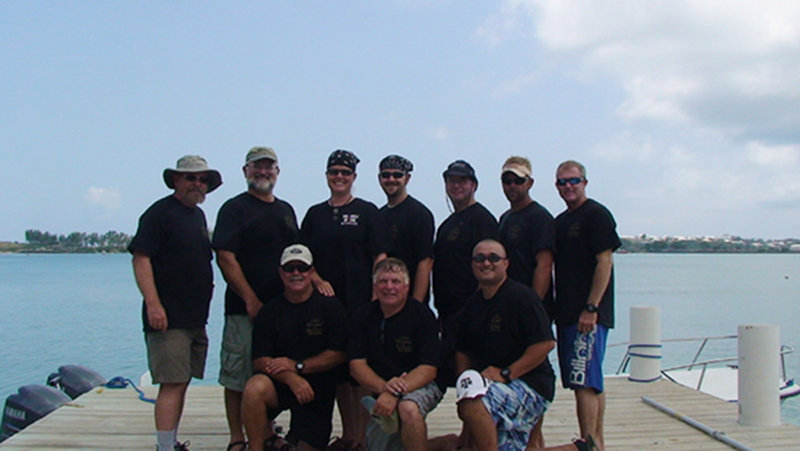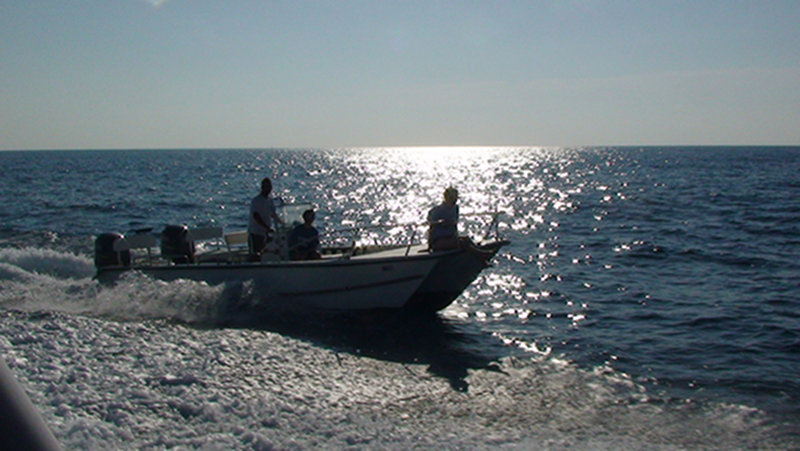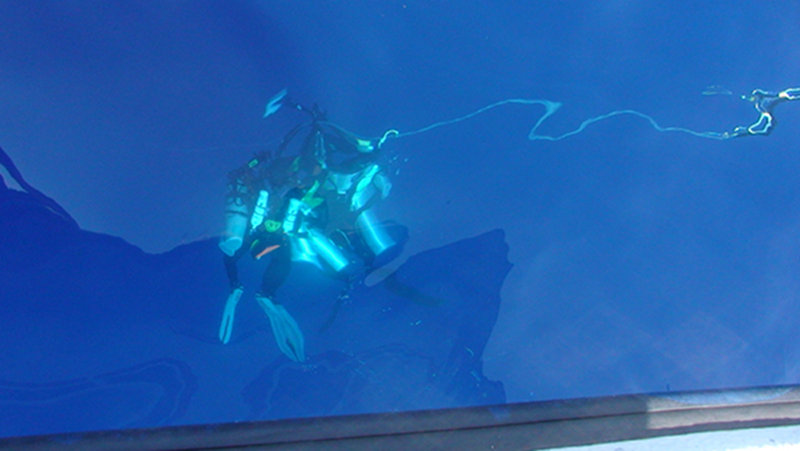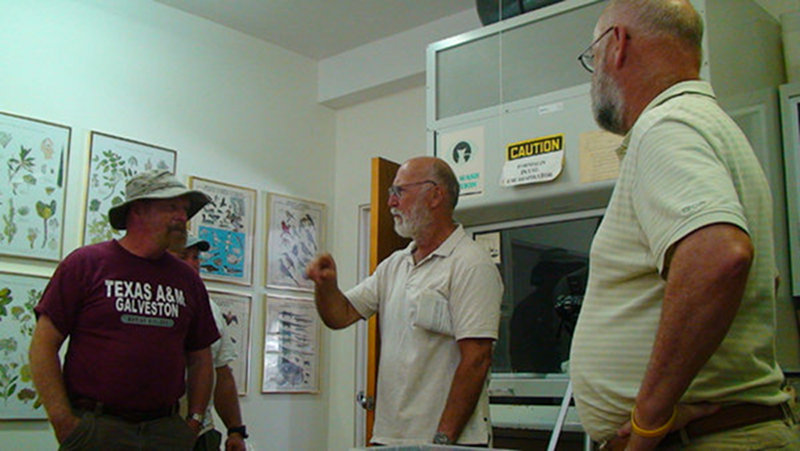
By Tom Iliffe, Principal Investigator Director - Marine Biospeleology Lab Texas A&M University

A group shot of the Bermuda Deep Water Caves team. Image courtesy of Bermuda Deep Water Caves 2011, NOAA-OER. Download image (jpg, 66 KB).

Alex Chequer following the the Pourquoi Pas after the last dive of the expedition. Image courtesy of Bermuda Deep Water Caves 2011, NOAA-OER. Download image (jpg, 92 KB).
During the three week NOAA Ocean Exploration project, Bermuda Deep Water Caves 2011: Dives of Discovery, our four member deep team, aided by numerous assistants, conducted eight deep offshore dives to a maximum depth of 448 ft., in addition to eight photo, instrument deployment, and exploration dives in inland caves systems. Principal discoveries made during the expedition were a natural bridge cave at 215 ft. depth on the northern edge of the main Bermuda platform, a drowned reef at nearly the same depth off the south shore, a sea level notch at 370 ft. at the eastern edge, and regularly spaced vertical rifts and jagged, possibly volcanic, cliffs along the southeastern side of Challenger Bank at depths to nearly 450 ft. All of these features were formed during the Ice Ages when world sea level had retreated to the depths that we reached on these dives.
Join the Iliffe dive team as they explore the Bermuda shelf edge to confirm the existence of once dry now submerged deep-water caves and collect unique biology. Video courtesy of Bermuda Deep Water Caves, NOAA-OER. Download (mp4, 14.4 MB).
Thus these discoveries represent features found along the coastline of Ice Age Bermuda where high cliffs would have encircled a much larger and flat topped island, very different from conditions than those found in Bermuda today. The depths that we reached on these mixed gas, rebreather dives represent the deepest scuba dives ever made in Bermuda. More people have stood on the surface of the moon than have dived in Bermuda to the depths we reached. At all sites, we collected biological and geological samples for further analysis and identification. Photos and video transects from deep sites are being analyzed for species abundance and distribution. Already, more than 50 species of plants and animals have been sorted, likely representing new records for Bermuda or even new species. This first glimpse of a new and previously unexplored frontier suggests that opportunities for exploration and discovery in the sea are still abundant.

Tom climbing back on vessel after a 450 ft dive. Image courtesy of Bermuda Deep Water Caves 2011, NOAA-OER. Download image (jpg, 99 KB).

The surface conditions were perfect for the last dive; this photo is of Tom and Jill in the water making their way to the surface at 80 ft depth. Image courtesy of Bermuda Deep Water Caves 2011, NOAA-OER. Download image (jpg, 55 KB).

Tom and Jill showing the depth of their last dive. Image courtesy of Bermuda Deep Water Caves 2011, NOAA-OER. Download image (jpg, 72 KB).

Tom and Paul catching up with Robbie and a local Bermuda scientist. Image courtesy of Bermuda Deep Water Caves 2011, NOAA-OER. Download image (jpg, 85 KB).